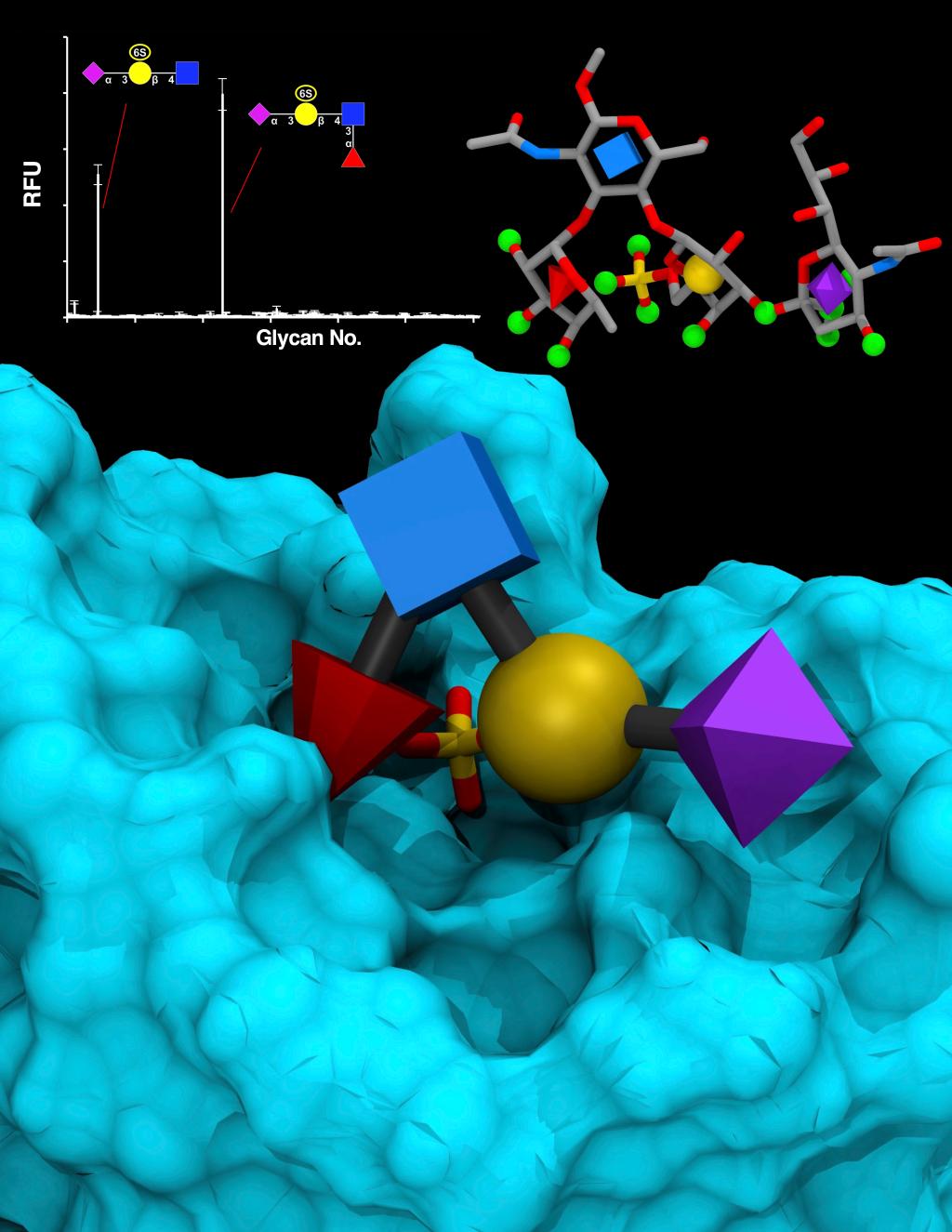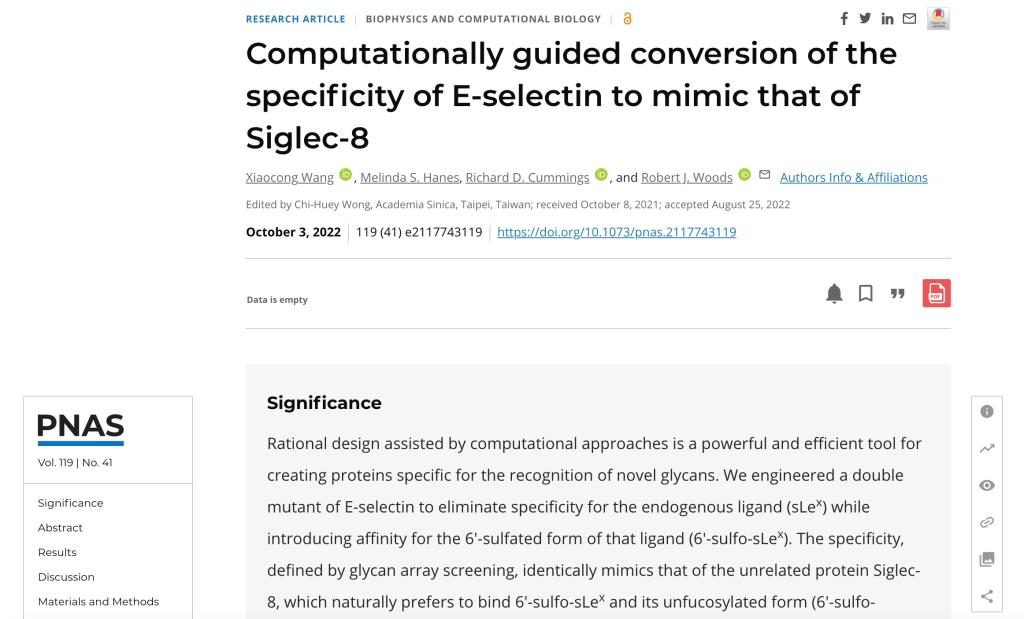
分子模型显示E选择蛋白分别与sLex结合,与6’-sulfo-sLex相互排斥的机理

分子模型指导的定向突变后E选择蛋白与6’-sulfo-sLex结合

(图文|辛西 编辑|信息 审核人|王晓聪)10月3日,我校betway必威西汉姆联官网生物信息系青年教师王晓聪博士的研究成果“Computationally guided conversion of the specificity of E-selectin to mimic that of Siglec-8”在线发表于Proceedings of the National Academy of Sciences of the United States of America。该工作通过理论模型指导对白细胞表面的E选择蛋白的定向突变,使之产生与唾液酸结合免疫球蛋白凝集素-8相同的配体结合特异性,并揭示了在蛋白工程中产生定向的结合特异性的一般规则。
寡糖是一种广泛存在于细胞内的生物大分子,参与到包括癌症在内的多种疾病的生物学过程中,因此,已有寡糖作为癌症的标识物应用在临床诊断中。然而,寡糖的识别受到了糖分子的多样性和实验技术的限制,天然的糖蛋白的结合特异性普遍不高。通过揭示糖蛋白与特定寡糖配体的结合机理,使用蛋白工程,提高糖蛋白对特定寡糖配体的结合特异性,可为寡糖的识别提供新的工具。
研究团队以白细胞表面的E选择蛋白为目标,对其进行分子模型的建模和分子动力学模拟,揭示E选择蛋白与唾液酸路易斯-X糖(sialyl Lewis X, sLex)结合,但其6’-硫酸化衍生物(6’-sulfo-sLex)中的硫酸根与结合区域内的两个谷氨酸(E92和E107)相互排斥,导致E选择蛋白不与该6’-硫酸化衍生物结合。研究团队在E选择素的分子模型中对谷氨酸进行突变,消除其与硫酸根的相互排斥。研究发现,突变其中单个谷氨酸(E92A或者E107A)都不足以消除相互排斥;但是,双突变(E92A/E107A)不仅可完全消除原有的排斥相互作用,同时可引进新的与6’-硫酸根的相互作用,增进E选择蛋白与6’-sulfo-sLex的相互作用。哈佛大学Cummings教授课题组通过多糖微阵列技术(Glycan Microarray)证实了理论模型的预测,并发现突变改造后的E选择素产生了只针对6’-sulfo-sLex的结合特异性。研究团队通过进一步研究,提出蛋白工程中引入对特定配体的结合特异性,不仅需要消除对目标配体的排斥与增强对目标配体的结合,同时需要降低对蛋白原生配体的结合。
我校生物信息系青年教师王晓聪博士为该论文第一作者,美国佐治亚大学复杂碳水化合物研究中心Robert Woods教授为通讯作者,哈佛大学Melinda Hanes博士与Richard Cummings教授完成实验工作。
英文摘要:
Sulfated glycans have been found to be associated with various diseases, and therefore have significant potential in molecular pathology as biomarkers. Although lectins are useful reagents for detecting glycans, there is a paucity of sulfate-recognizing lectins. And those that exist, such as from Maackia amurensis display mixed specificities. Recombinant lectin engineering offers an emerging tool for creating novel glycan recognition by altering and/or enhancing endogenous specificities. The present study demonstrated the use of computational approaches in the engineering of a mutated form of E-selectin that displayed highly specific recognition of 6’-sulfo-sialyl Lewis X (6’-sulfo-sLex), with negligible binding to its endogenous non-sulfated ligand, sLex. This new specificity mimics that of the unrelated protein Siglec-8, for which 6’-sulfo-sLex is its preferred ligand. MD simulations and energy calculations predicted that two point mutations (E92A/E107A) would be required to stabilize binding to the sulfated oligosaccharide with E-selectin. In addition to eliminating putative repulsions between the negatively charged side chains and the sulfate moiety, the mutations also abolished favorable interactions with the endogenous ligand. Glycan microarray screening of the recombinantly expressed proteins confirmed the predicted specificity change, but also identified the introduction of unexpected affinity for the unfucosylated form of 6’-sulfo-sialyl Lewis X (6’-sulfo-sLacNAc). Three key requirements were demonstrated in this novel case for engineering specificity for sulfated oligosaccharide: 1. removal of unfavorable interactions with the 6’-sulfate; 2. introduction of new favorable interactions for the sulfate; 3. removal of favorable interactions with the endogenous ligand.
